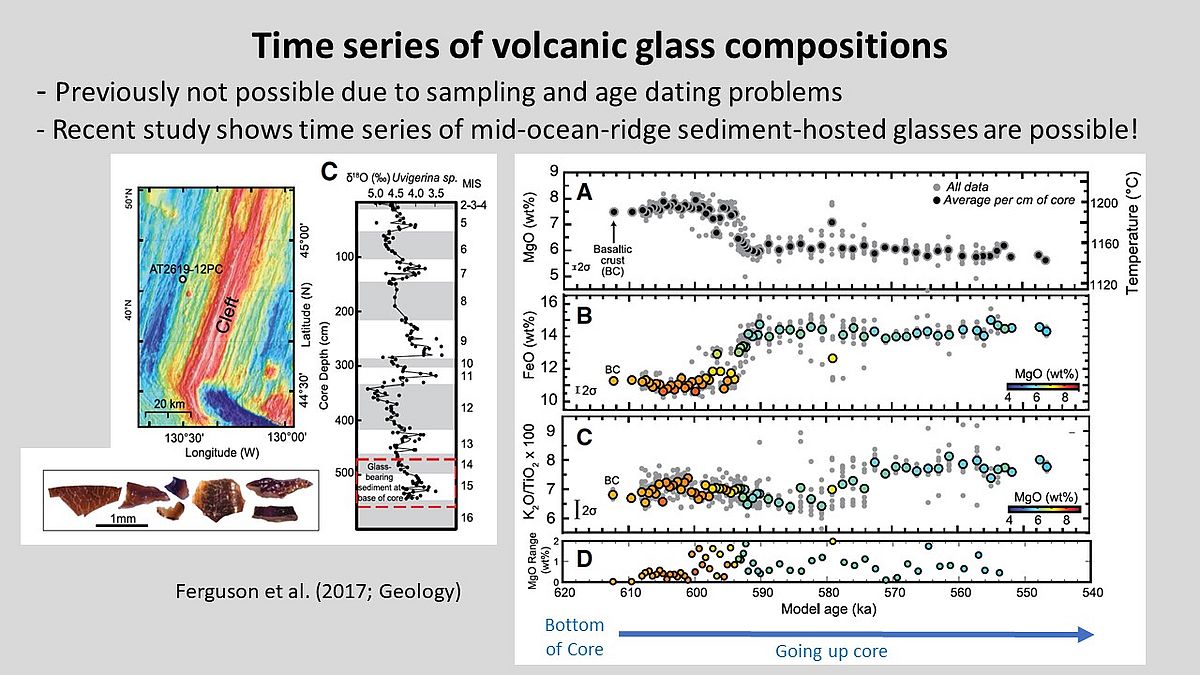T-SECTOR: Testing Solid Earth Climate connections Through mid Ocean Ridge time series
Petrology and geochemistry of volcanic glass
PIs: Charles Langmuir (petrology) and Kaj Hoernle (geochemistry)
The major aim of this subproject is to acquire a high-resolution time series of MORB from the present to 1.2-1.5Ma at 5-10ka resolution at three MOR segments. Once this relationship has been established, we will evaluate the influence of glacially induced sea-level changes on magma chemistry and melting dynamics.In summary, two sample types will be available from coring and drilling: 1) Dispersed glass shards in the lowermost sediment strata and discrete and dispersed tephra layers throughout the sediment cores, and 2) in-situ basement from the gravity core catcher, wax corer, rock drill cores and dredging. Wherever possible, fresh glass is separated from basement samples. In case of glass being absent, fresh whole rock groundmass will be used. Aim 2 consists of three distinct parts: A) Major and trace element chemistry of glass (and whole rocks when no fresh glass is available), B) Isotopic composition of glass (and whole rocks), and C) Volcanological studies of the glass.
Glass fragments will be separated from the sediment samples at 2 cm spacing and analyzed for major and trace elements by laser ablation Inductively Coupled Plasma Mass Spectrometry (ICP-MS). Once homogeneity has been established in the major and trace element composition of glass intervals, we will pool glass fragments from each of the different geochemically uniform intervals for Sr-Nd-Hf-Pb isotope analyses.Variations in the physical and chemical properties of the glasses and the authigenic Pb isotopes and hydrothermal metal concentrations of the long reference sediment cores will be compared with the d18O-based glacial/interglacial sea-level cycles to determine systematic variations through time. The glass geochemical data will be modelled to constrain melting and magma evolution processes together with source lithology and composition, which will then be compared with sea level fluctuations.





